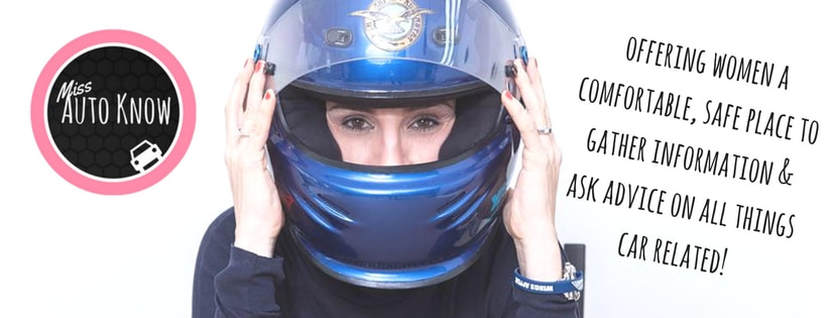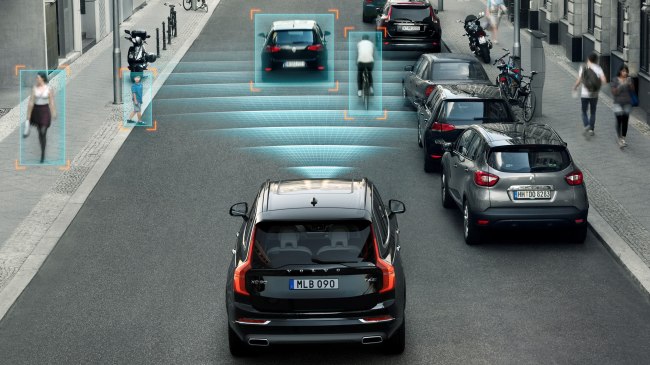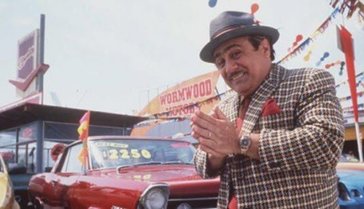|
A guide to choosing the right car for the more mature. As we get older in life we face unique challenges when it comes to driving. Don't worry, it's not like we are going to lose our ability to drive altogether, it's just that as mature drivers, we may begin to develop limitations that can significantly affect our driving capabilities.
Ah, the morning commute. You're tired, running late and the traffic is crawling. Your phone is already chirping away with e-mails, appointment reminders and to-do lists that you'd rather not do at all. You glance down to see what the stupid phone is freaking out about, and when you look back up, the Range Rover in front of you has stopped. It's now inches in front of you. You make a face like surprised little Macaulay Culkin in "Home Alone" and jam on the brakes, hopefully in time to avoid an insurance claim and then…. Your emergency braking system kicks in before you have time to even think about pressing the brake. So what is emergency braking and where do we find it? The good news is that these accident avoidance technologies have been available for years now and since testing and working on the first system with Volvo back in the mid naughties, I’ve seen vast improvements to a technology that was brilliant from the outset. Automatic or Emergency braking does exactly what is says on the tin. The car automatically brakes in an emergency. These sophisticated systems use sensors and computers in your car to anticipate an accident and help you avoid that fender bender…. or worse. From recollection, when testing the original Volvo XC60, the car would completely miss the vehicle in front at speeds below 40kph (around 25mph) and greatly reduce the impact at higher speeds meaning what would have been a amor incident ended up looking (and feeling) like a fender bender. Every manufacturer uses a different setup, so I’ll use Volvo (called City Safety) and Subaru’s systems (called EyeSight) as examples. Subaru's EyeSight uses two black and white cameras that work like your eyes to triangulate the speed and distance of the vehicle in front of you. They're mounted at the top of the windshield, and they scan every 0.1 seconds, looking for contrast with the background and vertical surfaces. The software is programmed to recognise several types of images, like the rear ends of vehicles, motorcycles, bicycles and pedestrians. Volvo uses lidar which is a laser radar. The system sends out a signal that pings off objects in front of it to determine distance and speed. Since lidar works best at short range, Volvo also has a camera mounted in the windshield and radar in the bumper that work together at high speeds as part of its collision warning system with full braking capability. The radar can see several hundred yards in front of the car, but it can't tell what it's seeing. The camera picks up on what the radar is seeing and can identify the object as a problem or something to ignore. So far, this is just how your car knows that there's a vehicle in front of you, and that the vehicle has slammed on its brakes. At this point your car's computer does some clever calculations and determines that you're about to hit the vehicle in front. It can also sense that you're not doing a thing about it. It's time for your car to take things into its own hands. “At under 20 miles per hour (32.2 kilometers per hour) or so, most systems can avoid a crash completely, although the goal is merely to minimize the impact and therefore the injury. “ Fact: Most people don't press the brakes hard enough when they're trying to avoid a crash. The Volvo system is actually two systems layered one on top of the other: City Safety for slower speeds, and the collision warning system for higher speeds. Since in our example you're crawling along on your way to work, City Safety will come into play. If the lidar thinks you're too close to the car in front and you're not doing anything about it, you get no warning. It starts braking for you, and then lights up a red LED in the windshield that mimics a brake light to get your attention. The idea is that maybe then you'll react and press the brake on your own; but if you don't, Volvo's got it. If you're going a bit quicker, Volvo's second system will pick up where City Safety leaves off. Above 30 miles per hour (48.3 kilometers per hour) or so, the system will give you a warning if you're following too closely. It will also precharge the brakes so they're ready to slow you down as soon as you heed the warning -- or take over if you don’t. Automatic braking doesn't operate alone. They are part of more comprehensive systems that includes throttle management, lane departure warning, adaptive cruise control and other safety systems. And the technology is only getting better, with improved cameras and sensors. As the technology moves forward (EyeSight and City Safety are both already on their third generation), it'll get cheaper, and as it gets cheaper, it'll be in more cars, which benefits everyone. If you have any questions, feel free to join in the discussion on our Facebook group Miss Auto Know Buying a car is one of the most important purchases you will make in your lifetime, second only to buying a house.
These days, women have become increasingly involved when it comes to making the decision of what car to buy, which manufacturer to choose and, most importantly, which dealer to hand over their cash to. Why is it then that men and women are still treated so differently, and why do women frequently face condemnation when we they arrive at the dealerships? I believe there are two reasons why this happens. Firstly, according to a major online poll conducted in the US and Europe, more than a quarter of female buyers believe they were foiled at the showroom in an attempt by the dealer to make a “quick sale that fits their specific sales target.” The second reason I know men and women are treated differently when it comes to car service and sales, is because my job involves teaching the sales staff all about the cars they are employed to sell, and all too often they tell me that they can make an easy sell to a woman because ‘she’ doesn’t understand as much or ask as many questions as a man. In short, I deliver product training on new vehicles to everyone from the design team to the dealer. As soon as a car manufacturer brings out a new model, I can almost guaranteed that I will know more than the entire sales team put together because I need to know last detail from the composites used to build the chassis to the distance in millimeters from the A-post to the B-post. As you can imagine, this can be great fun when walking into a car sales garage with my husband or a group of girlfriends! To start with, let me explain how it works. Every time I go into new car showroom, I will loiter around a specific vehicle and wait to see how long it takes for somebody to come and talk to me. You may not be surprised to know that generally the service and communication will be quicker if I am with my husband. As soon as the car salesman engages with me, I ask them to tell me about the car I am standing closest to. Theoretically what should happen is that he or she should say, “I am happy to tell you about this car however, why don't you first tell me about yourself so I can understand your specific needs and we can look at a number of models together?” Generally, a salesman will tell you the make and model of the car, the colour and a few features they think will impress you keep. For instance, this is the all-new blah, blah, blah. It has AFS, cruise control, pedestrian recognition, does 35 mpg and comes in red, white or blue. I know it sounds like a cliche but it's true, many car salesmen don't think women know much about cars and tend to carry that attitude through the introduction process and into the sale. So, imagine the sort of fun you can have when you start asking questions that little bit more in-depth and technical – like asking them to explain AFS and giving statistics on the pedestrian recognition system? It's a great game to play but it can go one of two ways. First, there is the car salesman that doesn't like to be shown up and takes great offence when meeting a woman who quite clearly knows more than he does about his own product - the car - his perceived ‘man only’ machine. He starts by being a little embarrassed and taken aback by not knowing the answer to (in my opinion) some pretty simple questions. I find that these few questions are enough to set the ball rolling. “When you said the car has AFS, do you mean the adaptive front lighting system? If so, can you tell me how your system works in comparison to the competition? Are you using LED bulbs and if so, how many? Are there sensors to detect light from oncoming traffic? How many degrees will the lights alter by when driving through the corner? Is this activated below a certain speed and do the lights actually rotate or does the fog light come on like in many other models?” The embarrassment of the salesman often increases and can manifest itself into arrogance and an inability to accept defeat. The second scenario is quite refreshing. Some salesmen realise that they do not know enough about their product and start asking me questions – mainly just to see if I can answer them. Within five minutes there will be a large group of dealership staff surrounding me. I would like to think it is because they are enthused by my knowledge and would like to learn more about the car however, I have the distinct impression it’s more to do with the great comical value they get in watching a woman talk about cars. To summarise, if you are a great business owner, you already know that to ignore the female market, or any potential customer, is business suicide. |
AuthorMiss Auto Know is an Automotive TV & Radio Presenter, Motoring Journalist, Stunt Driver, Commentator, Instructor, Automotive Trainer and all round, autocrat, motorbike and aircraft enthusiast. Archives
January 2018
Categories |




 RSS Feed
RSS Feed
